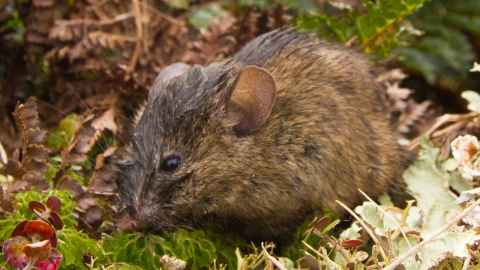Eradicating island invaders brings boost to biodiversity
11 August 2022
Successful campaigns to eradicate invasive species from islands show how the world can make big gains in biodiversity.

A study of more than 100 years of eradications of invasive species on islands around the world revealed most campaigns are successful, highlighting the potential for big gains for biodiversity.
Eradication campaigns protect native plants and animals and can help ecosystems withstand climate change, says Professor James Russell, of Waipapa Taumata Rau, University of Auckland, one of the co-authors of a new study.
For the first time, scientists studied all reported efforts to eradicate invasive vertebrates on islands worldwide, looking at 1550 campaigns on 998 islands, using the Database of Island Invasive Species Eradications (DIISE). The analysis found an 88 percent success rate and significant growth in the number of eradications since the 1980s.
“Our study found that success rates from invasive species eradications are high and have remained stable over time,” says Dena Spatz, lead author of the paper and senior conservation scientist at Pacific Rim Conservation. “This is a testament to the hard work of people and partnerships seeking to prevent species extinctions and restore island ecosystems.”
Eight countries account for 80 percent of all documented eradications: New Zealand, Australia, France, UK, US, Mexico, Seychelles, and Ecuador.
Islands are global hotspots for biodiversity and extinction, representing about 5 percent of Earth’s land area but enduring 61 percent of extinctions since the 1500s and hosting 40 percent of today’s highly threatened vertebrates.
Invasive species, especially mammals like rats, cats, and goats, were introduced to islands by humans either deliberately or accidentally, leading to harmful outcomes such as extinctions by eating native species and damaging habitat. Completely removing invasive species from islands has proven to be one of the most effective tools to halt and reverse this damage.
“This synthesis shows the remarkable conservation gains that have been collectively made on islands and builds on past work showing the tangible benefit to biodiversity,” says Nick Holmes, co-author of the paper. “This synthesis shows the remarkable conservation gains that have been collectively made on islands and builds on past work showing the tangible benefit to biodiversity.”
The team’s analysis found that eight countries were responsible for 80 percent of all documented eradications: New Zealand (the world leader), Australia, France, UK, US, Mexico, Seychelles, and Ecuador. Many of these countries have successfully completed multiple smaller projects, particularly targeting rats on small islands, and are now focusing on larger eradication projects and a variety of species.
In Aotearoa, a global partnership came together in 2016 to remove invasive mice from Antipodes Island to help protect the island’s endemic and native species, such as the Antipodes and Reischek’s parakeets.
“The success on Antipodes Island motivated New Zealand to pursue more ambitious eradication programmes currently under development, such as on the larger and inhabited Stewart Island, continuing to pave the way for key invasive mammals to be removed from the entirety of New Zealand by 2050,” says Professor Russell.
Media contact
Paul Panckhurst | media adviser
M: 022 032 8475
E: paul.panckhurst@auckland.ac.nz